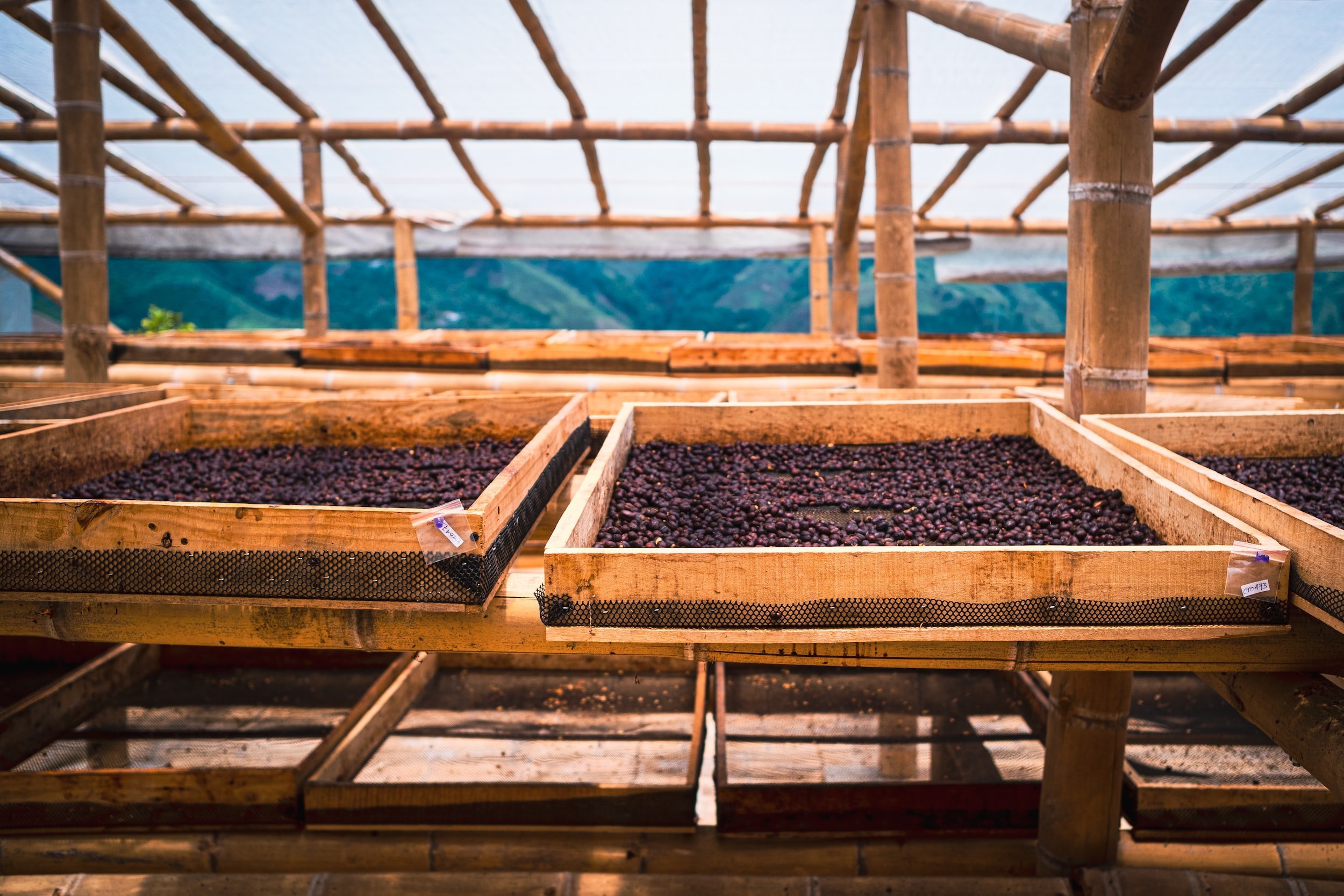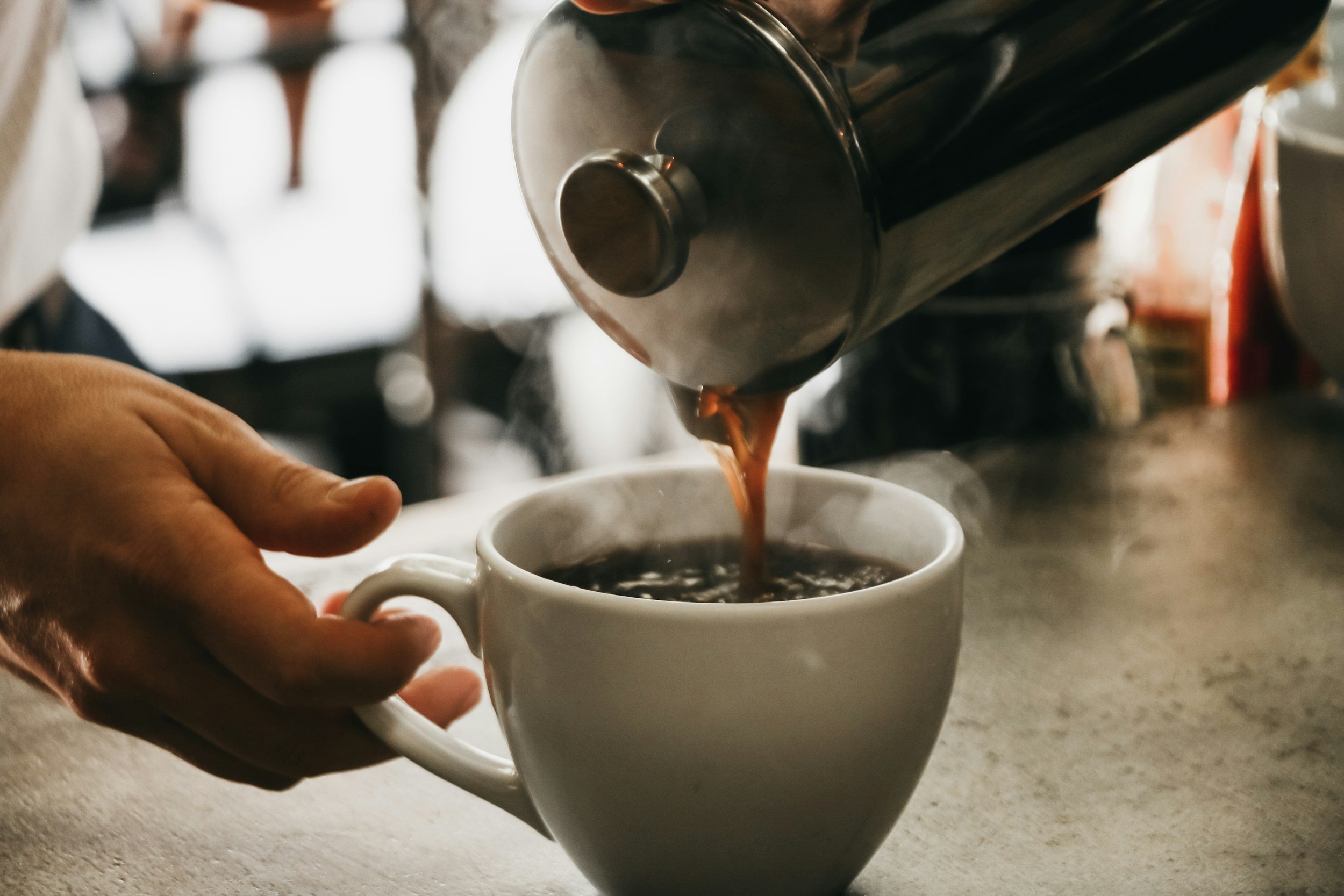Guide to Choosing a Pour-Over Kit
Pour-over coffee has gained popularity among coffee enthusiasts for its ability to produce a clean, flavorful cup.
When selecting a pour-over kit, several key factors come into play, such as dripper material, filter type, kettle control, brewing capacity, and your experience level.
In this guide, we'll walk you through everything you need to know to choose the perfect pour-over kit for your needs.
Quick Guide to Choosing a Pour-Over Kit
| Component | Recommendation | Best For |
|---|---|---|
| Dripper | Kalita Wave (flat-bottom) or Hario V60 (conical) | Beginners or experienced brewers |
| Filter | Paper (clean taste) or metal (reusable) | Taste clarity vs eco-friendliness |
| Kettle | Gooseneck kettle for precise pouring | Essential for even extraction |
| Additional Gear | Burr grinder, scale, thermometer | For optimal consistency |
Essential Components of a Pour-Over Kit
To get started with pour-over coffee, you’ll need a few essential items:
- Dripper: The key component that holds the coffee grounds and determines water flow.
- Filters: Affects flavor clarity and environmental impact.
- Carafe or Mug: Where your brewed coffee is collected.
- Kettle: A gooseneck kettle is highly recommended for precision pouring.
Choosing the Right Pour-Over Dripper
The dripper is the heart of any pour-over kit.
Choosing the right one depends on your experience level, brewing capacity, and material preferences.
Material Considerations
- Ceramic: Excellent heat retention but fragile.
- Glass: Aesthetically pleasing, but also fragile.
- Plastic: Lightweight and affordable, but may retain odors.
- Stainless Steel: Durable, but less heat retention.
Popular Dripper Brands
| Brand | Features | Best For |
|---|---|---|
| Hario V60 | Conical design for advanced control | Experienced brewers seeking precision |
| Kalita Wave | Flat-bottom design for consistent brewing | Beginners who want reliability |
| Chemex | Built-in carafe for brewing larger batches | Elegant option for serving groups |
| Melitta | Simple, budget-friendly option | Beginner-friendly and affordable |
Dripper Size Considerations
- Single-Cup: Ideal for personal use.
- Medium (2-4 cups): Great for small groups.
- Large (4-6 cups): Suitable for brewing multiple servings, such as the Chemex.
Understanding Filter Types
Choosing the right filter affects both taste and sustainability. Here's a breakdown of the common options:
- Paper Filters: The most common, producing a clean, bright cup of coffee. They're single-use, which can be less eco-friendly.
- Metal Filters: Reusable and eco-friendly, but they allow more oils and sediment into the cup, creating a richer, heavier flavor.
- Cloth Filters: Less common, but eco-friendly. They require more maintenance to keep clean and odor-free.
Pro Tip: For beginners, start with paper filters for a cleaner taste. If you're concerned about waste, try metal or cloth filters.
The Importance of a Gooseneck Kettle
A gooseneck kettle is essential for pour-over brewing due to its precise water flow.
The long, narrow spout allows you to control the pour, ensuring even saturation and extraction.
Expert Insight: According to coffee roaster Cortney Kern, "The more it [the water] moves around, the better." This highlights the importance of even saturation during brewing.
Key Factors in Choosing Your Pour-Over Kit
When selecting a pour-over kit, consider the following factors:
Ease of Use
- Beginner-Friendly: Drippers like the Kalita Wave or Melitta are more forgiving and produce consistent results.
- For Precision: The Hario V60 offers more control, but requires practice to master.
Consistency
- Flat-Bottom Drippers: The Kalita Wave provides more consistent results due to its design, making it ideal for beginners.
Material Preferences
- Consider durability, heat retention, and aesthetics. Ceramic and glass retain heat better but are fragile, while plastic and stainless steel offer durability at the expense of heat retention.
Brewing Capacity
- Single-Cup drippers are ideal for personal use, while larger drippers like the Chemex can serve multiple people. Choose based on your typical brewing volume.
Budget
- Drippers range from budget-friendly options like the Melitta to high-end models like the Chemex. Invest according to your brewing needs and how much you're willing to spend.
Additional Gear to Enhance Your Pour-Over Experience
While the dripper is the star of the show, having the right supporting tools can elevate your brewing:
- Burr Grinder: Ensures a consistent grind size, which is crucial for even extraction.
- Kitchen Scale: Helps you measure coffee and water accurately for consistent results. Aim for a 1:16 coffee-to-water ratio (e.g., 15g coffee to 240g water).
- Thermometer: Use water between 195-205°F for optimal flavor extraction.
Pro Tip: For perfect consistency, measure both your coffee and water using a kitchen scale.
Trends in Pour-Over Coffee Kits
Here are some recent trends shaping the pour-over coffee world:
- Dual-Function Drippers: Drippers like the Hario Switch V60 allow for both pour-over and immersion brewing, offering versatility for adventurous brewers.
- Travel-Friendly Drippers: Compact, collapsible drippers like the MiiR Pourigami are popular with travelers who want to brew quality coffee on the go.
- Sustainability Focus: Reusable filters, such as metal or cloth options, and eco-friendly materials are gaining traction as more people aim to reduce waste from single-use paper filters.
Conclusion
Selecting the right pour-over kit comes down to your preferences for ease of use, consistency, material, brewing capacity, and budget.
Whether you’re a beginner looking for simplicity or an experienced brewer seeking precision, there's a kit out there for you.
By choosing wisely and investing in additional gear like a burr grinder and a gooseneck kettle, you’ll be well on your way to enjoying a delicious, nuanced cup of coffee right at home.



